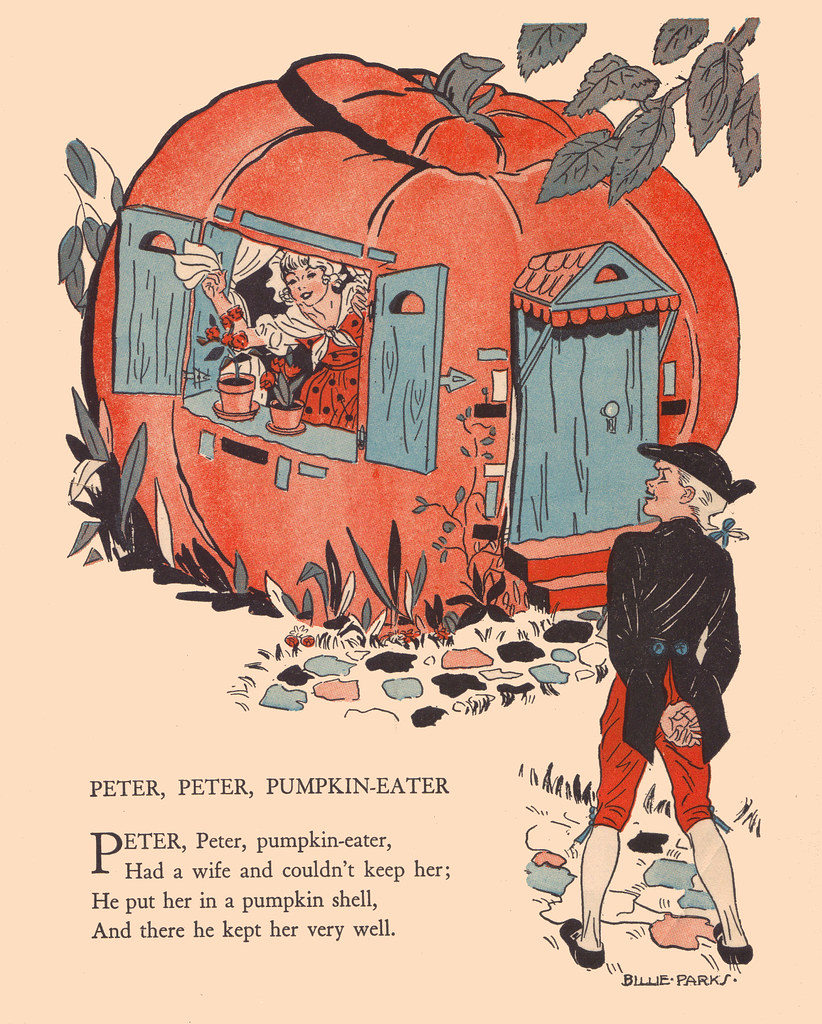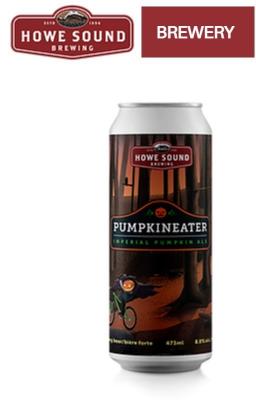Absolute Mother Goose classic for the season.
Pumpkineater Pumpkin Ale from the Howe Sound Brewing Company "Imperial ale brewed with pumpkin, nutmeg, cinnamon, ginger & cloves. 8.0% ABV"
Unlike other pumpkin beers that are more focused on the pumpkin flavour - this one is full-on pumpkin spice, to follow your afternoon PSL, a drinkable pumpkin pie, comforting and easing you into the evening.

The beer's name, of course, comes from the nursery rhyme
Peter, Peter pumpkin eater,
Had a wife but couldn't keep her;
He put her in a pumpkin shell
And there he kept her very well.
Peter, Peter pumpkin eater,
Had another and didn't love her;
Peter learned to read and spell,
And then he loved her very well.[1]
According to wikipedia, this particular nursery rhyme originated in the US; its existence first noted in around 1825, though a new article from Mental Floss (well worth the read!) quotes Peter Opie saying that it was first published in 1797 in London.
Several sources speculate that the rhyme has a hidden deeper meaning, interpreting the rhyme to mean that Peter found his wife to be 'unfaithful' (and what a challenging term that is!), encased her in a pumpkin - presumably dead or alive - and found this a much more agreeable situation. "In a male-dominated world, society inevitably blamed the woman as the source of marital strife, and Mother Goose tacitly supported that prejudice." ["Historical meaning in Mother Goose [...], William J. Baker, 1975"] There is also mention of historical references where rather than a pumpkin, the wife is ensconced in a wall, based on a Scottish version—first published in 1868—that contains no pumpkins:
“Peter, my neeper,
Had a wife,
And he couldna’ keep her.
He pat her i’ the wa’,
And lat a’ the mice eat her.”
 A more generous interpretation is shown in the image here, reminiscent of the nursery rhyme:
A more generous interpretation is shown in the image here, reminiscent of the nursery rhyme:
There was an old woman who lived in a shoe.
She had so many children, she didn't know what to do.
She gave them some broth without any bread;
And whipped them all soundly and put them to bed.
More generous to the woman, perhaps, but still not an childhood education approved approach!
However, the same source on "Historical meaning in Mother Goose" above points out that a lot of these early 20th century interpretations should be taken with a grain of salt:
"Theories concerning specific historical origins of the rhymes amount to little more than 'nebulous guesses'"
An article from "The Independent" in 1874 starts the "True and Reliable History of Peter the Pumpkin-Eater" as follows:
"Why this Peter couldn't keep his wife had been a mystery to me ever since I first heard of it, in cradledom. At length one night, after I had arrived at an age of discretion, I fell asleep in an easy-chair which stood in the parlor window, where, through the parted drapery, the moon shone full in my face. A fairy in a green jacket slid down on one of its beams and whispered the solving of this life-long riddle in my ears. Now I mean to tell the tale as it was told to me."
And as we all know - there is no truer source for a reliable history than the whispering of fairies. So there you have it!
Also - If you're like me and frequently look up information, please remember to donate to [Wikipedia] !


Add new comment